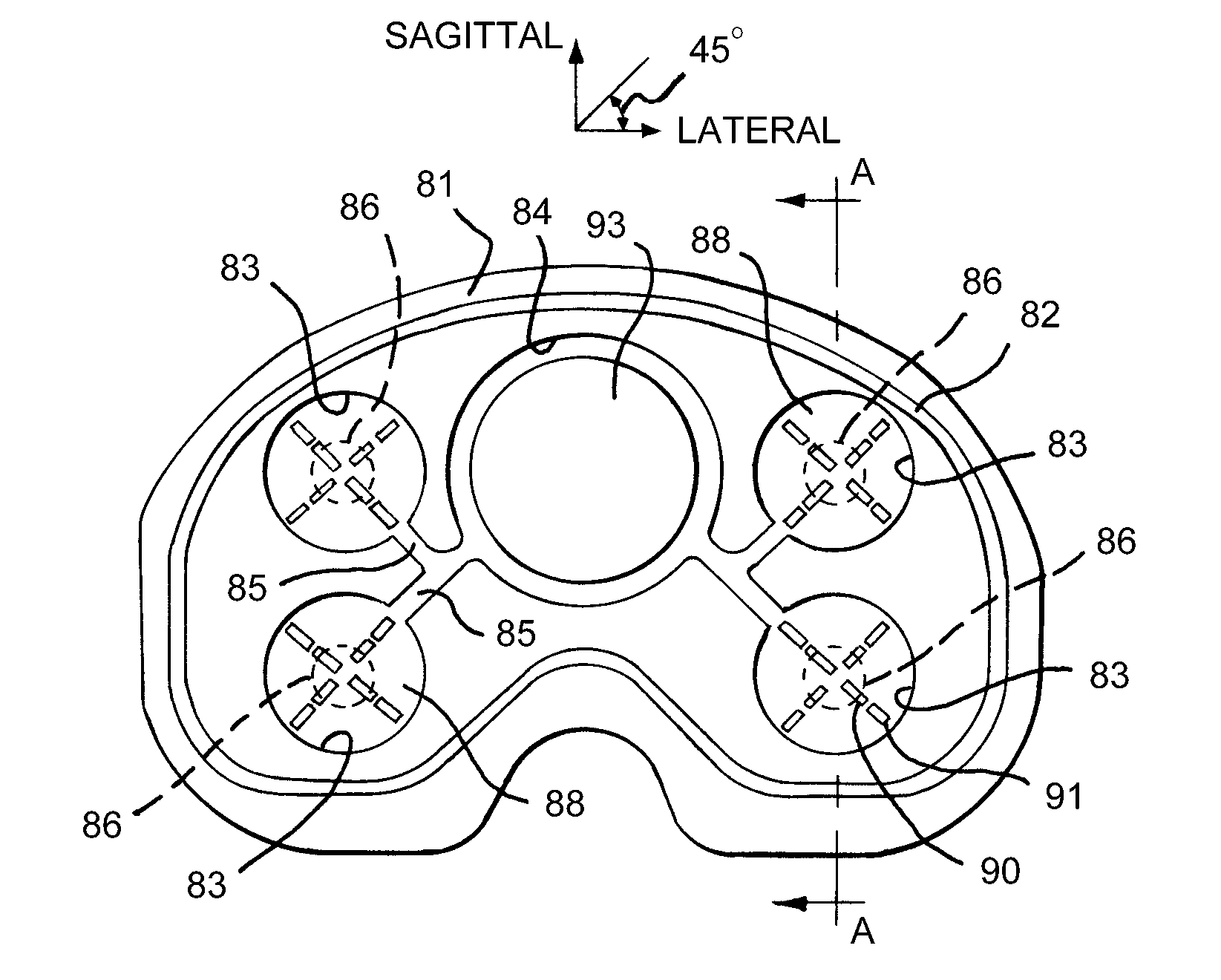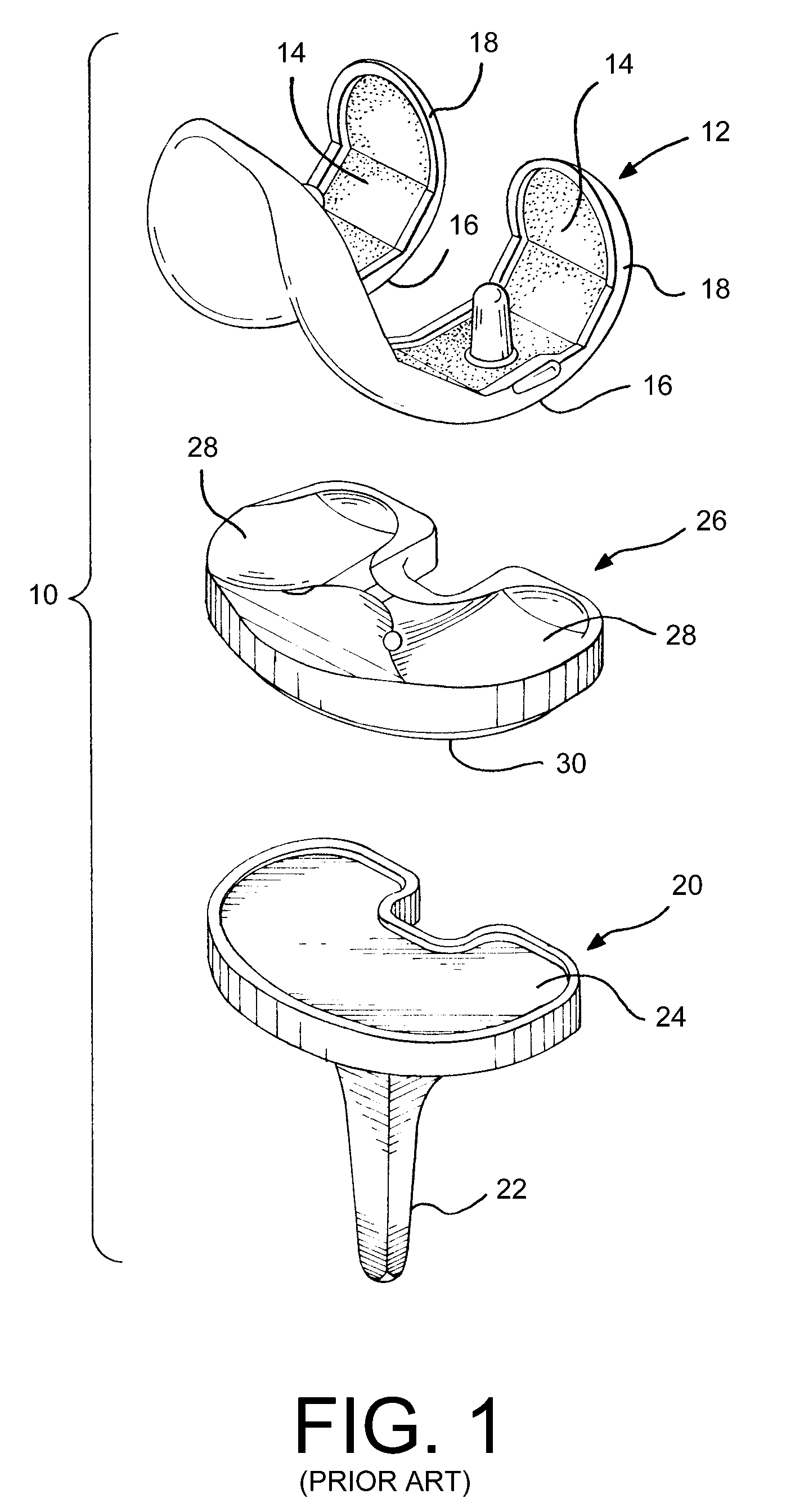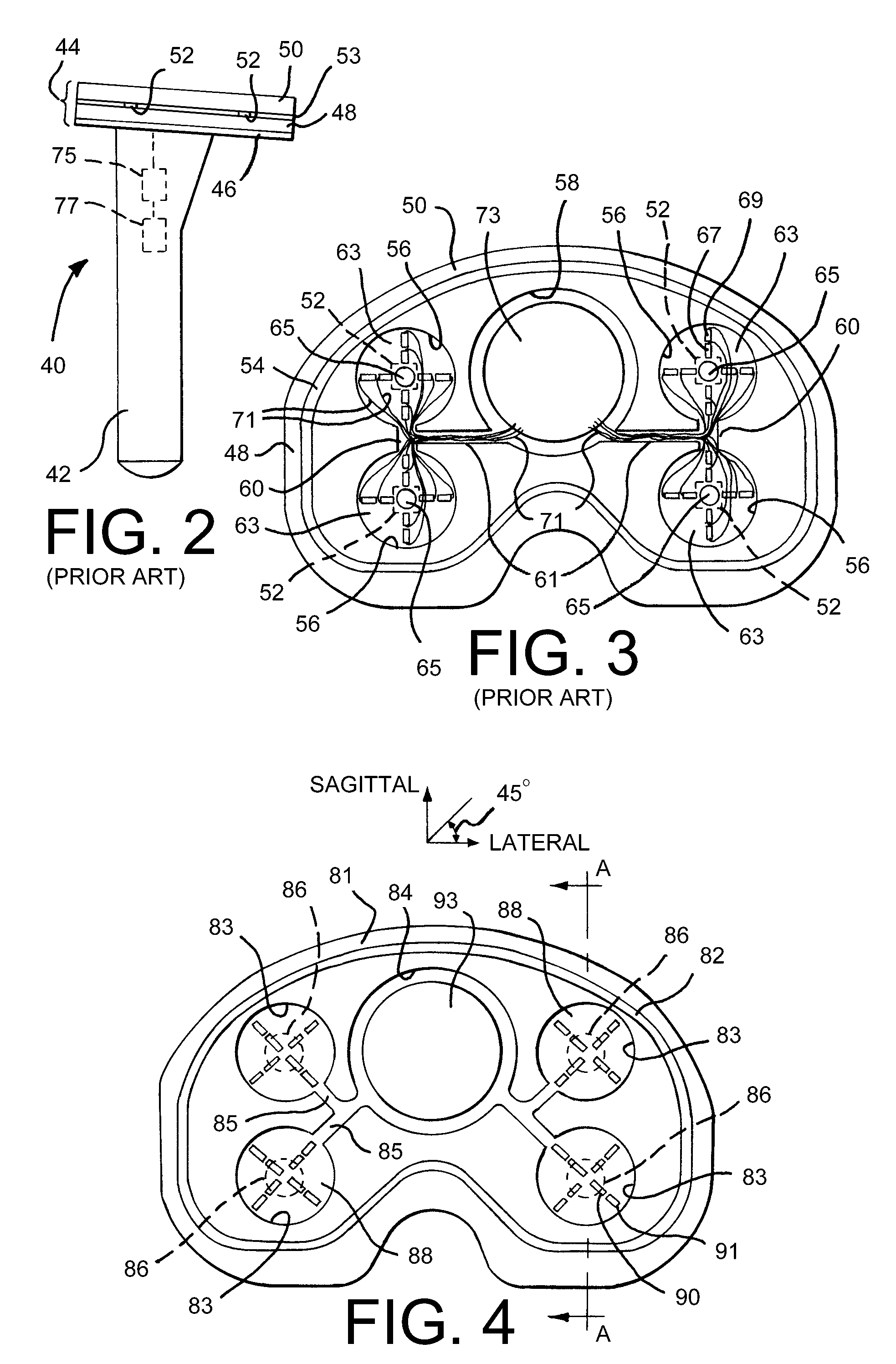Telemetric tibial tray
a telemetry and tibial technology, applied in the field of orthopaedic components, can solve the problems of wear debris development, inability to do, dislodge and migrate, etc., and achieve the effects of reducing the risk of fracture, accurate differential strain reading, and eliminating stress risers
- Summary
- Abstract
- Description
- Claims
- Application Information
AI Technical Summary
Benefits of technology
Problems solved by technology
Method used
Image
Examples
Embodiment Construction
[0034]For the purpose of promoting an understanding of the principles of the invention, reference will now be made to the embodiments illustrated in the drawings and described in the following written specification. It is understood that no limitation to the scope of the invention is thereby intended. It is further understood that the present invention includes any alterations and modifications to the illustrated embodiments and includes further applications of the principles of the invention as would normally occur to one skilled in the art to which this invention pertains.
[0035]As shown in FIG. 3, the lower transducer plate 48 of prior telemetric tibial trays utilizes support posts 52 that are square in cross-section. These support posts typically have a dimension of about 2.5 mm on each side. Each support post is integral with the load diaphragm 63 and is aligned with the no-load post 65 projecting into the transducer cavity. The no-load posts produce stress risers at the junctio...
PUM
| Property | Measurement | Unit |
|---|---|---|
| diameter | aaaaa | aaaaa |
| angle | aaaaa | aaaaa |
| angle | aaaaa | aaaaa |
Abstract
Description
Claims
Application Information
 Login to View More
Login to View More - R&D
- Intellectual Property
- Life Sciences
- Materials
- Tech Scout
- Unparalleled Data Quality
- Higher Quality Content
- 60% Fewer Hallucinations
Browse by: Latest US Patents, China's latest patents, Technical Efficacy Thesaurus, Application Domain, Technology Topic, Popular Technical Reports.
© 2025 PatSnap. All rights reserved.Legal|Privacy policy|Modern Slavery Act Transparency Statement|Sitemap|About US| Contact US: help@patsnap.com



